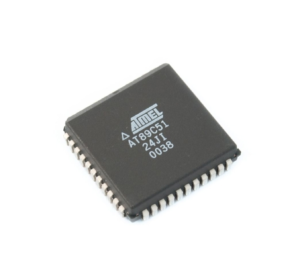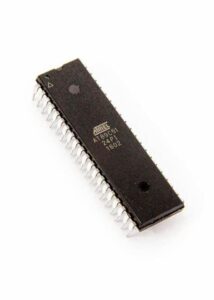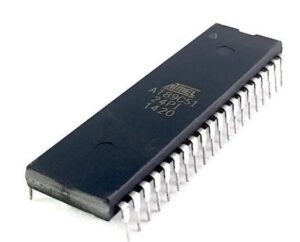Extract IC AT89C51 binary needs to reverse engineering ATMEL AT89C51 secured microcontroller protection and decrypt AT89C51 MCU microchip’s fuse bit, dump embedded firmware in the format of heximal source code from original encrypted microprocessor AT89C51; We can Extract IC AT89C51 Binary, please view the IC AT89C51 features for your reference:

Features
- Compatible with MCS-51™ Products
- 4K Bytes of In-System Reprogrammable Flash Memory
– Endurance: 1,000 Write/Erase Cycles
Fully Static Operation: 0 Hz to 24 MHz
Three-Level Program Memory Lock
128 x 8-Bit Internal RAM
32 Programmable I/O Lines
Two 16-Bit Timer/Counters
Six Interrupt Sources
Programmable Serial Channel
Low Power Idle and Power Down Modes
Description
The AT89C51 is a low-power, high-performance CMOS 8-bit microcomputer with 4K bytes of Flash Programmable and Erasable Read Only Memory (PEROM). The device is manufactured using Atmel’s high density nonvolatile memory technology and is compatible with the industry standard MCS-51™ instruction set and pinout similar to the process of Copy Microcontroller PIC12F635 Firmware.

The on-chip Flash allows the program memory to be reprogrammed in-system or by a conventional nonvolatile memory programmer. By combining a versatile 8-bit CPU with Flash on a monolithic chip, the Atmel AT89C51 is a powerful microcomputer which provides a highly flexible and cost effective solution to many embedded control application.

The AT89C51 provides the following standard features: 4K bytes of Flash, 128 bytes of RAM, 32 I/O lines, two 16-bit timer/counters, a five vector two-level interrupt architecture, a full duplex serial port, on-chip oscillator and clock circuitry from Read MCU PIC12F629 Archive. In addition, the AT89C51 is designed with static logic for operation down to zero frequency and supports two software selectable power saving modes after Extract IC AT89C51 Binary.

The Idle Mode stops the CPU while allowing the RAM, timer/counters, serial port and interrupt system to continue functioning. The Power Down Mode saves the RAM contents but freezes the oscillator disabling all other chip functions until the next hardware reset.
Port 1
Port 1 is an 8-bit bidirectional I/O port with internal pullups. The Port 1 output buffers can sink/source four TTL inputs. When 1s are written to Port 1 pins they are pulled high by the internal pullups and can be used as inputs. As inputs, Port 1 pins that are externally being pulled low will source current (IIL) because of the internal pullups for the purpose of Extract MCU PIC12F675 Code.
Port 1 also receives the low-order address bytes during Flash programming and verification.

Port 2 is an 8-bit bidirectional I/O port with internal pullups. The Port 2 output buffers can sink/source four TTL inputs. When 1s are written to Port 2 pins they are pulled high by the internal pullups and can be used as inputs. As inputs, Port 2 pins that are externally being pulled low will source current (IIL) because of the internal pullups before Clone IC.
Port 2 emits the high-order address byte during fetches from external program memory and during accesses to external data memory that use 16-bit addresses (MOVX @ DPTR). In this application it uses strong internal pullups
Port 3 also receives some control signals for Flash programming and verification.

